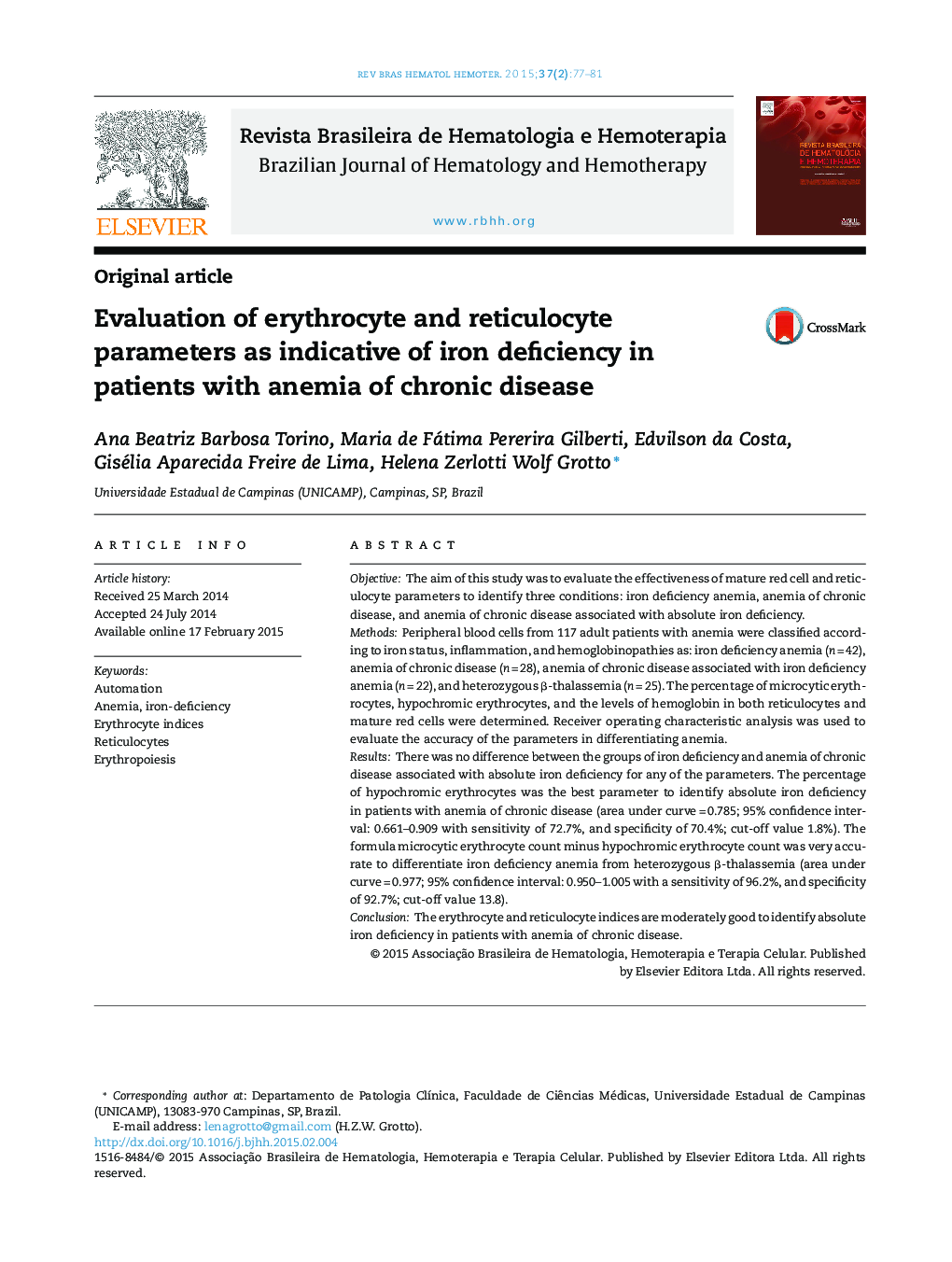| Article ID | Journal | Published Year | Pages | File Type |
|---|---|---|---|---|
| 3332961 | Revista Brasileira de Hematologia e Hemoterapia | 2015 | 5 Pages |
ObjectiveThe aim of this study was to evaluate the effectiveness of mature red cell and reticulocyte parameters to identify three conditions: iron deficiency anemia, anemia of chronic disease, and anemia of chronic disease associated with absolute iron deficiency.MethodsPeripheral blood cells from 117 adult patients with anemia were classified according to iron status, inflammation, and hemoglobinopathies as: iron deficiency anemia (n = 42), anemia of chronic disease (n = 28), anemia of chronic disease associated with iron deficiency anemia (n = 22), and heterozygous β-thalassemia (n = 25). The percentage of microcytic erythrocytes, hypochromic erythrocytes, and the levels of hemoglobin in both reticulocytes and mature red cells were determined. Receiver operating characteristic analysis was used to evaluate the accuracy of the parameters in differentiating anemia.ResultsThere was no difference between the groups of iron deficiency and anemia of chronic disease associated with absolute iron deficiency for any of the parameters. The percentage of hypochromic erythrocytes was the best parameter to identify absolute iron deficiency in patients with anemia of chronic disease (area under curve = 0.785; 95% confidence interval: 0.661–0.909 with sensitivity of 72.7%, and specificity of 70.4%; cut-off value 1.8%). The formula microcytic erythrocyte count minus hypochromic erythrocyte count was very accurate to differentiate iron deficiency anemia from heterozygous β-thalassemia (area under curve = 0.977; 95% confidence interval: 0.950–1.005 with a sensitivity of 96.2%, and specificity of 92.7%; cut-off value 13.8).ConclusionThe erythrocyte and reticulocyte indices are moderately good to identify absolute iron deficiency in patients with anemia of chronic disease.
